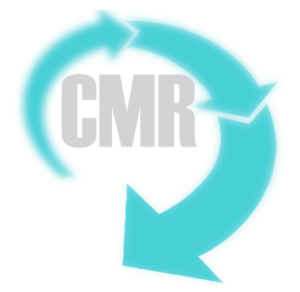 How student journalists learn to file public records requests
How student journalists learn to file public records requests
By Katherine Fink
Pace University
kfink@pace.edu
 Abstract: This interview-based study examines the experiences of college journalists who have filed freedom of information (FOI) requests. Sixteen college journalists were asked about specific public-records requests they filed and their feelings about FOI in general. This study finds that college journalists generally learned how to file FOI requests not in the classroom, but rather from their peers. Students filed requests that tended to seek records from their home institutions rather than from other agencies. College journalists were generally optimistic about the potential of FOI to yield newsworthy information, despite that many of their requests went nowhere. College journalists also believed their status as students put them at a disadvantage. Finally, some students recognized that the outcomes of requests were highly situational, based on the records officers handling them.
Abstract: This interview-based study examines the experiences of college journalists who have filed freedom of information (FOI) requests. Sixteen college journalists were asked about specific public-records requests they filed and their feelings about FOI in general. This study finds that college journalists generally learned how to file FOI requests not in the classroom, but rather from their peers. Students filed requests that tended to seek records from their home institutions rather than from other agencies. College journalists were generally optimistic about the potential of FOI to yield newsworthy information, despite that many of their requests went nowhere. College journalists also believed their status as students put them at a disadvantage. Finally, some students recognized that the outcomes of requests were highly situational, based on the records officers handling them.
Continue reading “Research (Vol. 58): Freedom of Information in College”
 In January 2019, 16 year old Nicholas Sandmann participated in a school trip to Washington D.C. along with other students from Covington Catholic High School in Park Hills, Kentucky. Sandmann, who wore a Make America Great Again hat, participated with his classmates in a March For Life rally and then went to the Lincoln Memorial to wait for the buses that would bring them home to Kentucky. While at the Lincoln Memorial, Sandmann encountered 64-year-old Native American activist Nathan Phillips, who was standing in front of him, playing a drum and chanting at an Indigenous Peoples March.
In January 2019, 16 year old Nicholas Sandmann participated in a school trip to Washington D.C. along with other students from Covington Catholic High School in Park Hills, Kentucky. Sandmann, who wore a Make America Great Again hat, participated with his classmates in a March For Life rally and then went to the Lincoln Memorial to wait for the buses that would bring them home to Kentucky. While at the Lincoln Memorial, Sandmann encountered 64-year-old Native American activist Nathan Phillips, who was standing in front of him, playing a drum and chanting at an Indigenous Peoples March. Sandmann’s interaction with Phillips was captured in photos and videos, which went viral. In addition to being reported by mainstream media outlets CNN, the Washington Post, NBC, and others, a video of the encounter was uploaded and widely shared on social media platforms, including Instagram, Twitter and YouTube, receiving millions of views. The video led to widespread accusations of bigotry by Sandmann. Almost universally, the media coverage of the encounter portrayed Sandmann as the smirking aggressor. That is not, apparently, what really happened.
Sandmann’s interaction with Phillips was captured in photos and videos, which went viral. In addition to being reported by mainstream media outlets CNN, the Washington Post, NBC, and others, a video of the encounter was uploaded and widely shared on social media platforms, including Instagram, Twitter and YouTube, receiving millions of views. The video led to widespread accusations of bigotry by Sandmann. Almost universally, the media coverage of the encounter portrayed Sandmann as the smirking aggressor. That is not, apparently, what really happened.
 Slightly less than 40% of California’s 119 community colleges offer associate degrees in journalism, and an important component in those degrees requires course work on the student publication. Forty-six have online publications. The colleges offer multiple levels of enrollment in publication courses, from beginning to advanced, and nearly all combine up to four levels of courses into one newspaper staff, so the mix of experience on a given staff varies greatly from campus to campus.
Slightly less than 40% of California’s 119 community colleges offer associate degrees in journalism, and an important component in those degrees requires course work on the student publication. Forty-six have online publications. The colleges offer multiple levels of enrollment in publication courses, from beginning to advanced, and nearly all combine up to four levels of courses into one newspaper staff, so the mix of experience on a given staff varies greatly from campus to campus.  Writer-coaching is not a new concept
Writer-coaching is not a new concept A case study of 50 years of corrections in a college newspaper
A case study of 50 years of corrections in a college newspaper Abstract: Corrections increase transparency and credibility, but college newspapers rarely publish them. This study explores trends in college newspaper corrections. In particular, it analyzes 50 years of corrections at a sample college newspaper and its website. Through thematic analysis (N = 95 corrections), it discusses changes in correction style and content over time. It explores the struggles of college newspapers, as well as the influence of professional news outlets. In particular, the authors identified a shift from early “requests for corrections” to more “modern” corrections that included labels and apologies. It also finds a strong influence of the student editor, who occasionally published specific calls for transparency and accuracy. As student newspapers have significant staff turnover, this study recommends that messages about corrections and accuracy be shared by student media’s consistent forces: relevant classes, publication handbooks, and—perhaps most importantly—faculty advisers.
Abstract: Corrections increase transparency and credibility, but college newspapers rarely publish them. This study explores trends in college newspaper corrections. In particular, it analyzes 50 years of corrections at a sample college newspaper and its website. Through thematic analysis (N = 95 corrections), it discusses changes in correction style and content over time. It explores the struggles of college newspapers, as well as the influence of professional news outlets. In particular, the authors identified a shift from early “requests for corrections” to more “modern” corrections that included labels and apologies. It also finds a strong influence of the student editor, who occasionally published specific calls for transparency and accuracy. As student newspapers have significant staff turnover, this study recommends that messages about corrections and accuracy be shared by student media’s consistent forces: relevant classes, publication handbooks, and—perhaps most importantly—faculty advisers. Balancing Act: Launching a research program requires give-and-take
Balancing Act: Launching a research program requires give-and-take Adjustments from COVID-19 may mark permanent changes for student newspapers
Adjustments from COVID-19 may mark permanent changes for student newspapers